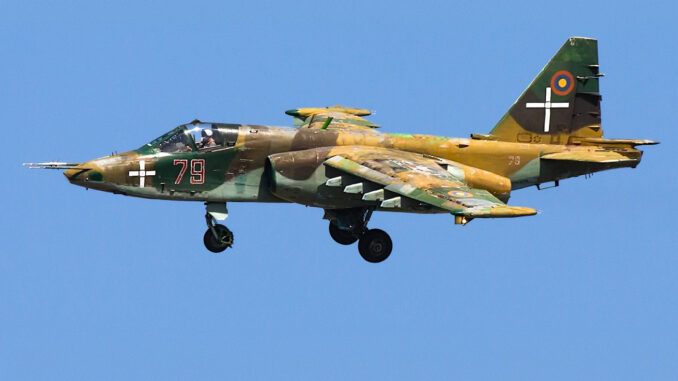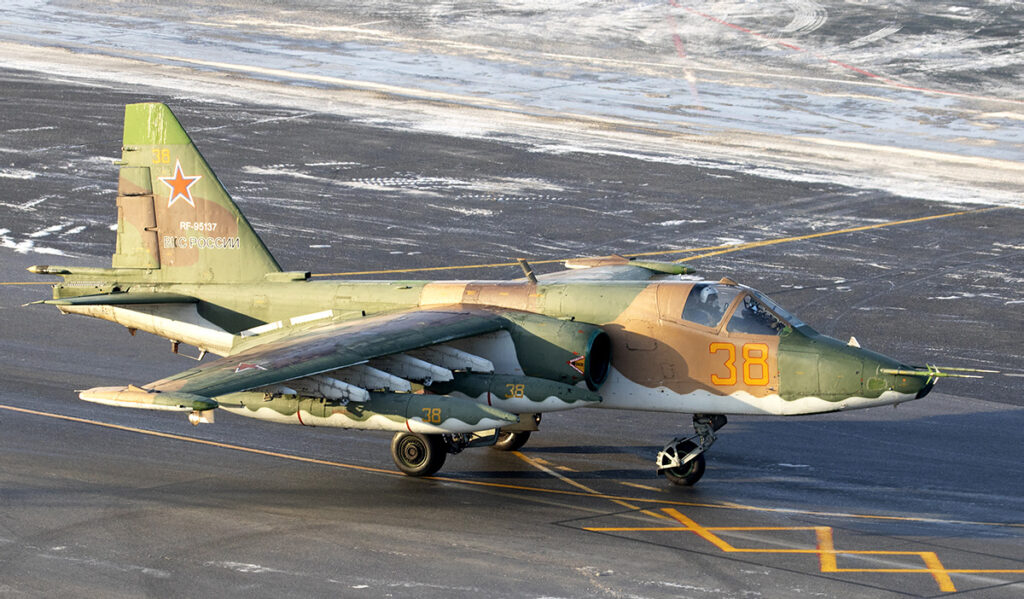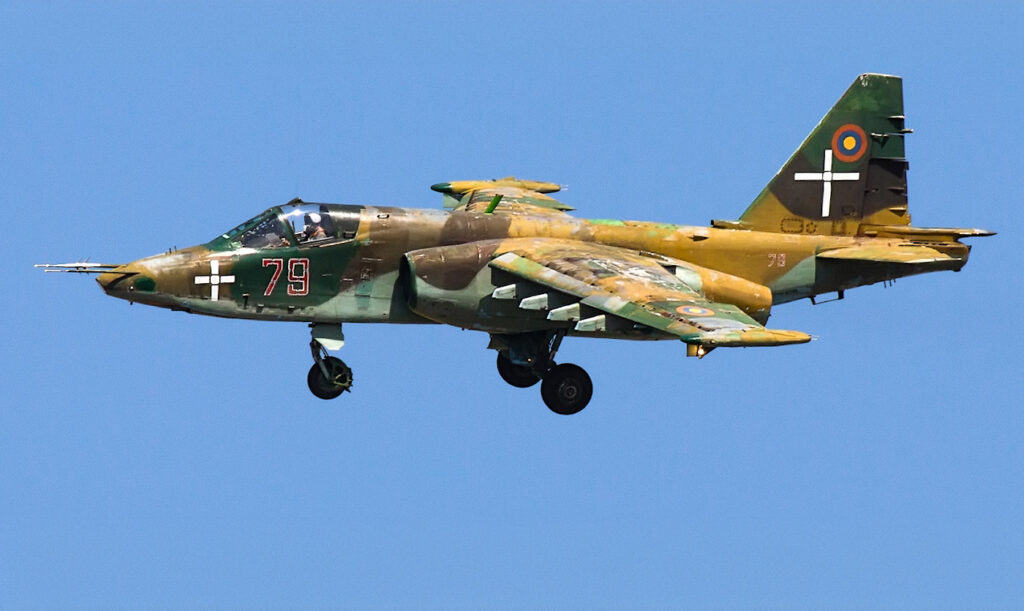
Technical analysis of the Belarusian Su-25 modified to carry simulated nuclear bombs, impact on European security.
In brief
Belarus, in partnership with Russia, has equipped its Su-25s with weapons simulating nuclear bombs as part of joint exercises. This initiative marks a show of force towards the West, at a time when NATO is supporting Ukraine. The implications of this military cooperation are significant for European security, signalling a new dynamic in nuclear deterrence.

Detailed analysis of Belarusian Su-25s equipped with simulated nuclear bombs
Background and objectives of the joint exercises
The recent appearance of a Belarusian Su-25 with ‘nuclear training munitions’ underlines the intensification of military cooperation between Russia and Belarus. These tactical exercises are intended to send a clear message to the West, particularly the NATO allies supporting Ukraine. General Igor Kolesnikov, head of the 12th Main Directorate of the Russian Ministry of Defence, confirmed that these manoeuvres include the delivery and suspension of special air weapons on carrier aircraft.
The Su-25s, although technologically inferior to modern fighter jets, are suited to this type of exercise because of their robustness and ability to operate at low altitude. These manoeuvres are used to simulate nuclear deployment scenarios, reinforcing the deterrent posture of Russia and Belarus.
Nature of the simulated munitions
The munitions under the wings of the Su-25 are deliberately covered, leaving room for speculation as to their exact nature. One possibility is that they are IAB-500 training bombs, which simulate the effects of a nuclear weapon, including the creation of a characteristic mushroom cloud. These training bombs allow pilots to practise without using real nuclear weapons.
Actual tactical nuclear bombs, such as the RN-40 and RN-41, date from the Cold War and were developed for various Soviet aircraft. The Su-25 has also been designed with a nuclear capability, although its readiness for this role remains uncertain. IAB-500 bombs offer a practical alternative for current exercises, avoiding the risks associated with real nuclear weapons.
Modification of Su-25s for nuclear capability
The announcement by Belarusian President Alexander Lukashenko in August 2022 that some Belarusian fighter jets would be modified to carry nuclear weapons has attracted attention. Initially, it was suggested that the retired Su-24s would be modified, but it emerged that it was the Su-25s that had been adapted. This is surprising, as Belarus has more advanced aircraft, such as the Su-30SM, which could have been fitted with this capability.
The modification of the Su-25 to carry nuclear weapons involved work in Russian factories, with appropriate training of Belarusian flight personnel. This modernisation demonstrates the determination of Russia and Belarus to strengthen their nuclear deterrent capability against NATO.
Geopolitical and strategic consequences
The presence of nuclear weapons, even simulated ones, on Belarusian soil has major implications for European security. This situation allows nuclear weapons to be deployed more quickly, thereby increasing the risk of conflict. Furthermore, the training of Belarusian personnel in the use of nuclear weapons indicates serious preparation for possible use in wartime.
The command and control structure for nuclear weapons in Belarus remains unclear, but it is likely that the weapons will remain under Russian control, to be handed over to Belarusian forces only if necessary. This model is similar to that of the B61 nuclear bombs stored by the United States in Europe, which are available to certain NATO members in the event of conflict.
Reactions and implications for NATO
Nuclear developments in Belarus have prompted Polish officials to consider joining NATO’s nuclear sharing programme. This underlines the growing importance of nuclear deterrence in the region as tensions between Russia and the West continue to escalate.
Russia’s threshold for the use of tactical nuclear weapons may be lower than previously thought. One report suggested that the loss of 20% of Russia’s ballistic missile submarines or three cruisers could trigger a nuclear response. This possibility increases the threat of a nuclear conflict in Europe, requiring increased vigilance from NATO and its allies.

The upgrading of Belarusian Su-25s to carry simulated nuclear weapons represents an important step in military cooperation between Russia and Belarus. This initiative strengthens their nuclear deterrent posture vis-à-vis NATO and raises new questions about European security. The geopolitical and strategic implications of this development require close attention and an appropriate response from NATO allies to maintain stability in the region.
War Wings Daily is an independant magazine.